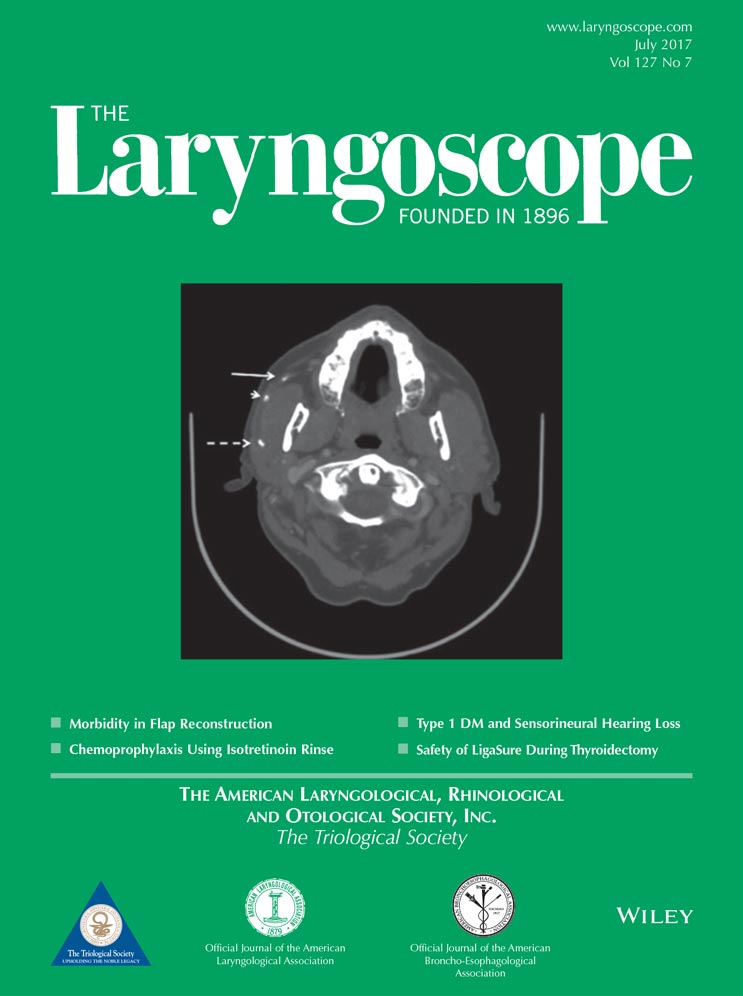Voice outcome and voice-related quality of life after surgery for pediatric laryngotracheal stenosis
Financial Disclosure: Erasmus University Rotterdam Trust Fund, reference number 97030.23/11.0530. The authors have no other funding, financial relationships, or conflicts of interest to disclose.
Abstract
Objectives
To evaluate the long-term outcome of voice quality and voice-related quality of life after open airway surgery for pediatric laryngotracheal stenosis.
Study Design
Prospective cohort study.
Methods
Children under the age of 18 years at time of follow-up and with a history of open airway surgery for acquired laryngotracheal stenosis were included in this analysis. To assess voice-related quality of life, the pediatric voice handicap (pVHI) index was completed by the patients' parents. The dysphonia severity index (DSI) was used as an objective measurement for voice quality.
Results
Fifty-five parents completed the pVHI, and 38 children completed the DSI. This showed high pVHI values and low total DSI scores, indicating significant voice disturbance. After multivariate analysis, the presence of comorbidities and glottic involvement of the stenosis are associated with poor long-term voice-related quality of life.
Conclusion
Significant voice disturbance is common after surgery for pediatric laryngotracheal stenosis. Glottic involvement of the stenosis and comorbidities is associated with poor voice-related quality of life. Evaluation of pre- and postoperative voice quality and voice-related quality of life is advised for children treated for laryngotracheal stenosis.
Level of Evidence
2B. Laryngoscope, 127:1707–1711, 2017




